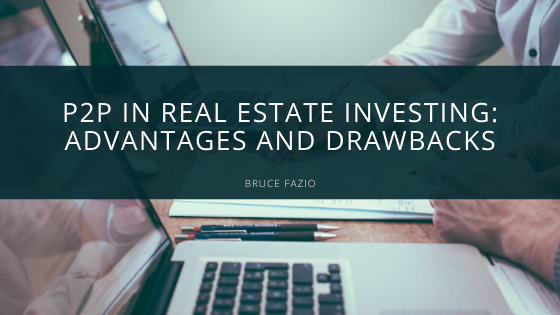Modern real estate investors are a lucky bunch, given that they have access to dozens of financing options. Not only can they use government loans, mortgages, or private equity, they also have crowdfunding and peer-to-peer (P2P) platforms at their disposal. P2P is becoming incredibly popular amongst younger investors since it allows one to connect with individuals willing to invest cash and doesn’t require immaculate credit. However, like all methods of real estate financing, there are definite drawbacks and advantages. Before getting involved with a P2P platform, here are some things you should know:
The Basics
Peer-to-peer lending is operated through specialized P2P platforms. Borrowers are connected to screened, anonymous investors and given what are usually personal loans. Contact between the borrower and the lender is typically nonexistent or minimal, with a majority of the communication going through the platform. The platform then approves and services the loan, and, together with the lender, claims a portion of the loan’s interest.
Advantages of P2P Lending
The most significant advantage of peer-to-peer lending lies with its ease of use, especially when compared to traditional loans like mortgages. Given that banks, or their federal regulations, aren’t involved in the process, there is minimal paperwork involved in the process. Borrowers only need to complete an application, prove their identity, and show proof of employment or income. P2P lending is also incredibly fast—most loan offers are completed after only a few days. In some cases, loans have been approved in a matter of hours.
Affordability is another great advantage of P2P lending. Interest rates are significantly lower than more antiquated forms of lending. This, in part, is due to much lower overhead costs than loans that are given by banks or official lenders. What’s more, P2Ps also have less origination and closing fees.
Drawbacks of P2P Lending
While 65% is the most common loan-to-value ratio used in real estate investing, many P2P lenders only allow low ratios. Meaning if you want to use only one form of lending for your purchase, P2P lending may not be for you—or, you will need to find a way to supplement the P2P loan when purchasing a property.
Overall, the biggest con associated with P2P lending is its high level of risk. In this case, borrowers who do not plan out their finances accordingly can take a big loss. Many investors who use P2P lending are drawn to it because it doesn’t require a ton of upfront costs. However, many who do not plan well find themselves in hot water because they’ve borrowed more than they can afford.
As with any form of lending, prospective investors need to thoroughly examine their finances and what they can comfortably afford. From there, researching the best fit of lending relies solely on the scope of your finances and goals. If your finances allow it, P2P offers an incredible way for new investors to get involved in real estate investing and an opportunity to grow their investment portfolios.


Recent Comments